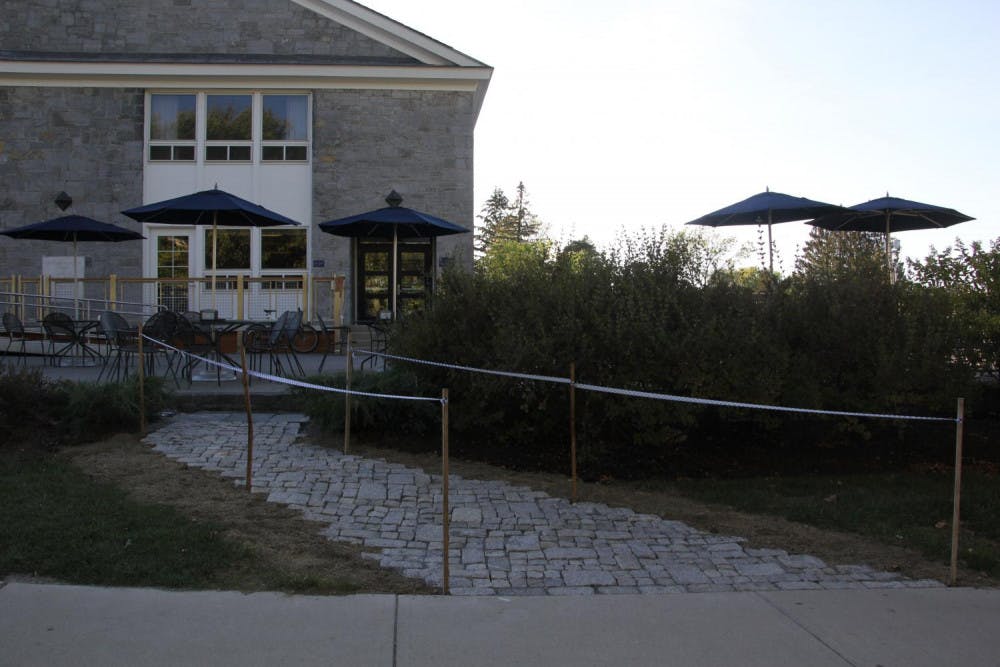The facilities staff at the college has recently begun the process of updating sidewalks throughout campus, successfully overseeing the construction of three new stone pathways surrounding Proctor dining hall. These pathways are intended to make traversing campus both more convenient and safer for the community.
“In facilities, we’re quite concerned with accessibility, and we want to make sure that you can walk on all the sidewalks well,” said Time Parsons, a landscape horticulturalist at the college. “We’re extremely wary of areas next to sidewalks where the dirt has worn away due to erosion. If [the path] dips down enough, you could potentially twist your ankle and get injured.”
The facilities team initially conceived the idea to update Middlebury’s sidewalk infrastructure last spring, and began constructing the new paths prior to the start of the academic year.
The mason who constructed the paths was Brad Lambert, who works for the college’s carpentry department. Parsons said the paths only took “a couple of days” to build.
In order to maximize the effectiveness of the new pathways, Parsons and the facilities team carefully observed student movement patterns and used their findings to decide where to install new pathways. Many students, for example, used to cut across a flower bed in front of Proctor dining hall to reach the language tables entrance. After the facilities team identified this makeshift pathway, they decided to turn it into a formal brick pathway.
“Sidewalks in general are really hard to lay out,” Parsons said. “It seems to be a real urban mentality to stay on the sidewalk because when you’re in the city, stepping off usually means getting hit by a car. But in a place like this, it’s damn cold, and you want to get from point A to point B as fast as possible, and if there’s not a walkway there, you don’t care as much.”
The new sidewalks are made of granite stones instead of conventional concrete due to the constructional constraints of filling new sections of concrete near older sidewalks.
“There’s a lot more to a sidewalk than what you see, as there might be a foot and a half of concrete underneath,” Parsons said. “If you have a corner where two sidewalks meet, pouring concrete can get tough. We thought that these granite stones would then be a lot easier and more manageable, so we picked three or four key spots on campus to test them out.”
Because the durability of these granite stones in cold conditions is still unclear, the college is holding off on building additional stone pathways until after this winter.
“[The stones] may move too much in the winter, we might not be able to plow on top of them, or the frost might lift them up,” Parsons said. “This is really a trial run. We do not yet know whether the cost of these stones will outweigh that of concrete. When we do figure that out, we certainly may add more of these pathways; we’re always looking to upgrade, but it’s really too soon to say.”
Moving forward, Parsons urges students to voice their opinion on whether current pathways require maintenance or if additional sidewalks are needed in certain areas of campus.
“I’m always open to hearing from students where it’s hard to walk or where sidewalks should be,” Parsons said. “There are some key spots that I know of, and [updating Middlebury’s pathways] is on a large to-do list that we have.”




